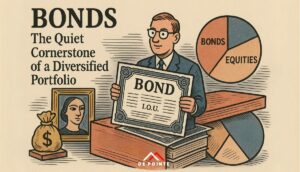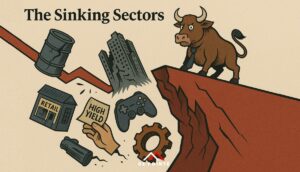Article

Alternative investments continue to attract investors looking to diversify their portfolios and seek high returns. Here’s a look at some key trends in the markets for art, gold, classic cars, watches, wine, and whiskey for 2024.
Classic Car Market Trends
Classic cars are increasingly seen as a viable investment, often outperforming traditional equities. The market for collectable cars, particularly high-end models from brands like Ferrari, Mercedes-Benz, and Porsche, has seen tremendous growth. The Knight Frank Luxury Investment Index (KFLII) reports a 500% growth in the value of top classic cars over the past decade. This trend is fueled by the scarcity of these vehicles and their cultural and historical significance, making them highly sought after at auctions and private sales (Classic Driver).
What to Watch Out For:
- Maintenance Costs: Classic cars require significant upkeep and maintenance to preserve their value.
- Market Knowledge: Investing in classic cars requires deep knowledge of the market and specific models.
- Authenticity and Condition: Ensuring the authenticity and condition of the vehicle is crucial to avoid purchasing overvalued or counterfeit cars.
Art Market Trends
The art market remains among the most robust alternative investments with significant potential for appreciation. Contemporary art, in particular, continues to outperform other segments due to high demand and limited supply. Key drivers include the increasing purchasing power of ultra-high-net-worth individuals and the global marketability of these assets. Platforms like Masterworks have democratised access to art investments, allowing fractional ownership and expanding participation in this asset class (CAIA Association) (WallStreetZen).
What to Watch Out For:
- Market Volatility: Art prices can be highly volatile and influenced by trends and tastes that can change rapidly.
- Liquidity Issues: The art market can be illiquid, with long holding periods required to realise significant gains.
- Authenticity and Provenance: Ensuring the authenticity and clear provenance of artworks is crucial to avoid fraud and overvaluation.
Whiskey Market Trends
Whiskey investment, particularly in rare and collectable bottles, has seen a significant rise in recent years. The Rare Whiskey 101 Apex 1000 Index, which tracks the performance of the rare whiskey market, has shown substantial growth. Key factors include the limited production of high-quality whiskey, increasing global demand, and the cultural cachet associated with rare bottles. Investors are drawn to the high returns, with some rare bottles appreciating value significantly over short periods (J.P. Morgan Private Bank).
What to Watch Out For:
- Market Volatility: Whiskey prices can be volatile and influenced by trends and consumer tastes.
- Storage and Insurance: Proper storage and insurance are necessary to maintain the value of whiskey investments.
- Counterfeiting: The whiskey market is susceptible to counterfeiting, making verification of authenticity essential.
Gold Market Trends
Gold remains a reliable store of value and a hedge against economic uncertainty. J.P. Morgan predicts that gold prices could peak at $2,300/oz by 2025, driven by structural bullishness. Factors contributing to this trend include ongoing geopolitical risks, inflation concerns, and central banks’ gold-purchasing policies. Despite a dip in alternative investments overall in 2023, gold continues to attract significant investment interest due to its perceived stability (J.P. Morgan | Official Website).
What to Watch Out For:
- Price Fluctuations: Gold prices can be influenced by numerous factors, including geopolitical events, inflation rates, and changes in currency values.
- Storage and Insurance Costs: Physical gold requires secure storage and insurance, which can add to the investment costs.
- Market Manipulation: The gold market can be susceptible to manipulation, impacting prices.
Watches Market Trends
Investment in luxury watches continues to rise, with brands like Rolex, Patek Philippe, and Audemars Piguet leading the market. These timepieces not only retain their value but often appreciate over time, especially limited editions and rare models. The market dynamics are influenced by strong global demand, limited supply, and the enduring appeal of these luxury items. The investment performance of these watches has been particularly robust, often outpacing more traditional asset classes (J.P. Morgan Private Bank).
What to Watch Out For:
- Market Saturation: The popularity of watch investments could lead to market saturation and potential value decline.
- Authenticity: The market is rife with counterfeit watches, making verification crucial.
- Condition and Maintenance: The condition of the watch and regular maintenance can significantly impact its value.
Wine Market Trends
Fine wine is another of the alternative investments that has shown strong performance. The Liv-ex Fine Wine 1000 index, which tracks the price movements of 1,000 of the most traded wines globally, has consistently outperformed traditional equity markets. Investment-grade wines from regions like Bordeaux, Burgundy, and Napa Valley are particularly sought after. The market is driven by the increasing global demand for fine wines, limited production, and the unique ageing potential that adds value over time (WallStreetZen). There are some concerns that new farming technologies that allow vineyards to create consistent conditions for grapes will reduce the investment appeal of wine as fine vintages become more frequent and consistent, leading to a glut of supply.
What to Watch Out For:
- Storage Conditions: Proper storage is critical to preserve the value of wine investments.
- Market Fluctuations: Wine prices can fluctuate based on vintage, region, and global demand.
- Authentication and Provenance: Ensuring the authenticity and clear provenance of wine is essential to avoid counterfeit bottles.
The alternative investment sector presents diverse opportunities across various asset classes. Art, Gold, classic cars, watches, wine, and whiskey each offer unique advantages and potential for significant returns. Investors should consider these trends and the specific dynamics of each market to make informed decisions. As always, diversification remains key to managing risk and maximising returns in the evolving landscape of alternative investments.






